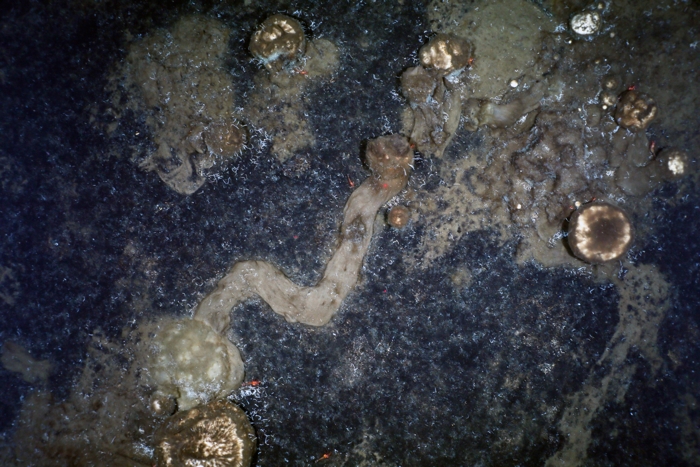
Spicules can be composed of either calcium carbonate or silicon dioxide and are produced in sponge cells called sclerocytes. The skeleton of the sponge can be made up of a combination of either spongin fibers (collagen threads) ,collagen filaments (complex protein bundles), or spicules. The water is moved through a series of canals by the flagellum of choanocytes, and then it exits through seperate pores, called oscula. Water comes into the sponge through ostia, small pores in the surface of the sponge. Water flow is essential to the functioning of a sponge as they receive water and nutrients from this continual flow. This is a layer containing the skeleton of the sponge and some cells. The space between these layers is called the mesenchyme.

These cells have flagellum that move water containing oxygen and nutrients throughout the sponge. Sponges are made up of three layers.The outside layer consists of pinacocytes.The inside layer consists of choanocytes, or collar cells. These are sponges that have an inner space with a larger volume than the amount of surface area on the outside. Free-standing sponges include the tube, vase, and barrel varieties. An encrusting sponge is one the conforms to a hard surface. One distinction is between encrusting and free-standing sponges. Sponges can be found in many different shapes and sizes.

Unlike the other classes, spicules are formed in both the sclerocytes and the epithelial cells and do not form a distinct pattern or structure. These sponges are usually found in shallow waters. There are less than 100 known species in this class.

The class Homoscleromorpha is the most recent class identified. Their spicules are fused in large complicated patterns. They are composed of silica, the same chemical compound that makes up glass. Instead, they exist mainly in deep Arctic waters. Glass sponges are not found in coral reefs. Generally, they are not as large or brightly colored as demosponges.

Their skeletal structure is made up of large spicules of calcium carbonate. They can be found living on coral reefs in the shallow waters of tropical regions. Scientists have identified around 400 species of calcareous sponges. The common household sponge is a dried demosponge. They have varied skeletal structures which can be made up of spongin fibers, spicules of silica or calcium carbonate, or any combination of these. Demosponges can grow quite large, to over 2 meters in height. These include four main classes, glass sponges, calcareous sponges, demosponges, and homoscleromorpha.Īpproximately 90% of all sponge species are in this class.They are often brightly colored, unlike the dull glass and calcareous sponges. There are currently around 5,000 known sponge species.


 0 kommentar(er)
0 kommentar(er)
